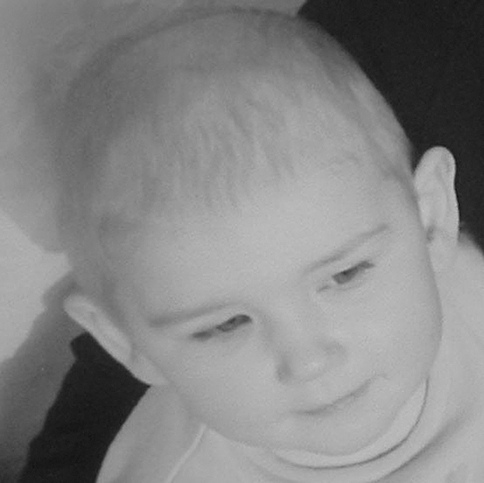Letters to the Editor
Written parental permission has been given for these images to be published in a medical journal.
There are no competing interests.
29 August 2008
Dear Editor,
HABITUAL HAIR-PULLING RESPONSIVE TO DOLL THERAPY
Case Report
A 2-year-old girl had extensive loss of previously normal scalp hair over 6 months. During this time, she habitually stroked, twirled and pulled at her hair while she was relaxing and sucking her thumb. She was otherwise well with no systemic symptoms. There was no pica. She was neurodevelopmentally thriving and had no emotional or psychological stress factors present. Personal and family history was unremarkable. Physical examination showed extensive generalised loss of scalp hair (Fig. 1), but no other abnormality.

Hair loss in patient.
Her mother bought a number of dolls, each of whom had long nylon hair on their head and gave them to her daughter who took to them with alacrity. The child began to twirl the doll's hair when relaxing and left her own hair untouched. On review at 6 months, the patient had normal scalp hair though the dolls now suffered from alopecia (Fig. 2).

Normal hair in patient, hair loss in doll.
Discussion
Hair-pulling, or trichotillomania, is a common cause of hair loss in childhood. In pre-school children, hair-pulling is associated with relaxation and sleep as a self-limiting variant of normal tactile exploration, whereas cases referred to hospital outpatient services tend to be older children often with other behavioural or psychosocial problems.1
Hair-pulling may be associated with hair-eating, particularly in older children with trichotillomania. In severe and prolonged cases, this may lead to the development of a trichobezoar.2 In younger children, the appearance of alopecia affecting dolls may be an early feature of habitual hair-pulling.3
For this child, the simple expedient of providing a long-haired doll allowed for the transference of habitual and disfiguring hair-pulling from child to doll, thus permitting normal hair growth. Precautions should be taken to minimise accidental swallowing of hair when this is judged to be a risk.




